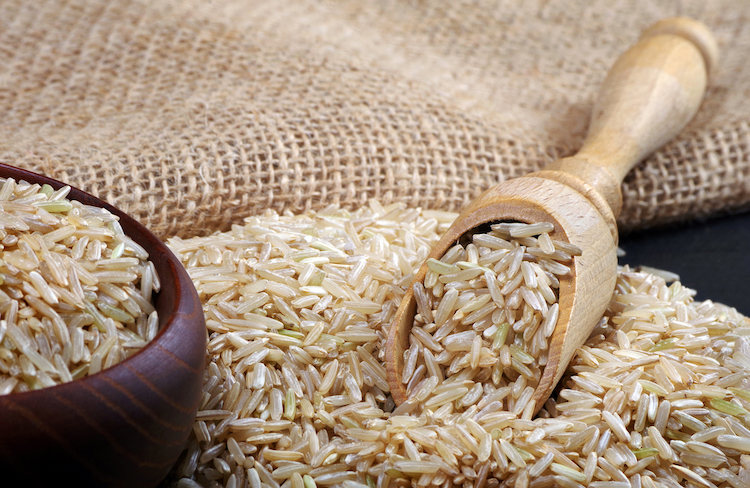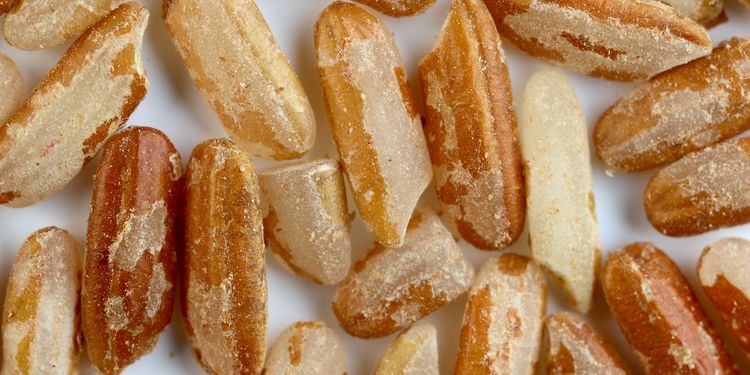Is Brown Rice Really Healthier Than White Rice?
People love to debate on the internet. Peruse a few health websites and you’ll quickly realize that the world of nutrition science is rife with heated debates about seemingly everything.
One particularly fiery dispute concerns brown rice and white rice. Which one is healthier?
Most “health-conscious” people I know adamantly declare brown rice to be the healthier option. They claim it’s more nutrient-dense than white rice, which is condemned as having a harmfully high glycemic load good for nothing but spiking blood sugar levels.
How healthy is brown rice really, though?
I’ll admit, at first glance, the arguments for brown rice and against white rice look convincing. When you take a closer look, though, you’ll see that brown rice isn’t nearly as healthy as some claim.
Let me show you what I mean.

More Nutrients? Not Really
Most people who eat brown rice instead of white do so because they’ve read or heard that brown rice contains more nutrients. This makes sense because when comparing food labels, brown rice does look to be much more nutritious than white rice.
For a typical brand of brown rice vs white rice, 100 g of raw rice contains:
| Brown Rice | White Rice | |
| Carbs | 77 g | 80 g |
| Fiber | 3.5 g | 1 g |
| Fat | 3 g | 0.6 g |
| Protein | 8 g | 7 g |
| Thiamin (Vitamin B1) | 0.4 mg | 0.07 mg |
| Niacin | 5 mg | 1.6 mg |
| Iron | 1.5 mg | 0.8 mg |
| Magnesium | 143 mg | 25 mg |
| Potassium | 223 mg | 115 mg |
According to the labels, white rice contains more starchy carbs and less of everything else.
Remember, though, that food labels can be misleading.
First of all, it’s important to remember that the nutrients listed on the label are for 100 g of raw rice. Last time I checked, no one eats rice raw, and cooking rice tends to decrease its nutrients. So right off the bat, brown rice isn’t nearly as nutritious as the label would have you believe.

Second, while cooked brown rice would still have more nutrients than cooked white rice, it doesn’t necessarily matter- our bodies can’t digest and access most of these nutrients.
The nutrients in brown rice are located in the “bran”— the hard outer layer of the rice grain. (Side note: the bran is what makes brown rice brown. Brown rice is milled to remove this layer to make white rice.) The bran of brown rice is also filled with phytic acid, which is bound to the nutrients. While some animals, like rats, evolved to be able to break down the phytic acid and access the nutrients, humans didn’t.
So the nutrient-filled bran of brown rice is practically useless to us. Not only that, but it makes brown rice harder to digest than white rice. Compared to white rice, consuming brown rice also hampers your ability to digest fat, and it reduces dietary protein.
Toxic Overload
A series of studies released by Consumer Reports Magazine in 2012 showed that traces of arsenic were found on many different rice products.
Many of these arsenic trace levels were well above the 5 parts per billion (ppb) safe limit set by the EPA. These studies also found that the more rice people ate, the more arsenic was found in their blood!
If you don’t know already, arsenic is a harmful carcinogen that, in cases of overexposure, can lead to serious health issues. Children are especially susceptible to the dangers of arsenic.
On average, brown rice products carried higher levels of arsenic than white rice products, some with nearly double the EPA’s safe limit of arsenic.

Should You Eat White Rice?
When you look at the facts, it’s clear that white rice is a better, healthier option than brown rice. White rice is easier to digest, has no effect on dietary protein or fat digestibility, and carries less arsenic.
But does that mean you should go chow down on lots of white rice? While white rice is better than brown rice, it’s overall a pretty neutral food.
Eating rice a couple of times a week is nothing to beat yourself up about, but that doesn’t mean you should start eating rice with every meal!
This is especially true if you’re insulin-resistant, trying to lose weight, or struggling with metabolism issues. If you find yourself in one of these categories, be wary of white rice, as its high glucose load will be difficult for your body to handle.
Ultimately, white rice is a carrier food; whether or not it plays a healthy role in your diet depends on what it’s being served with.
A “veggie rice bowl” may sound healthy— but if those veggies were cooked in vegetable oil and then smothered in a sugary sauce, it’s far from what your body needs.
If you’re going to eat rice, make sure to top it with foods your body will love, like vegetables, or healthy fats such as coconut oil or ghee, which will reduce the sugar spike associated with eating white rice.
Summary
If your goal is to eat as healthfully as possible, you’ll want to avoid rice for the most part. As far as grains go, they’ll fill you with more calories than nutrients. However, the occasional serving of rice won’t kill you. Just make sure to go for white rice over brown!
